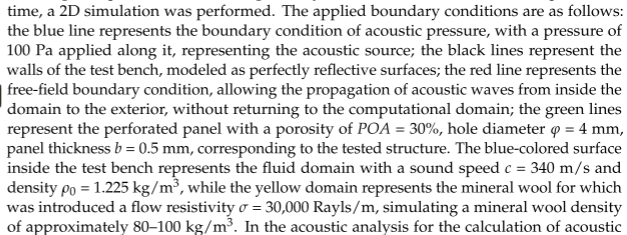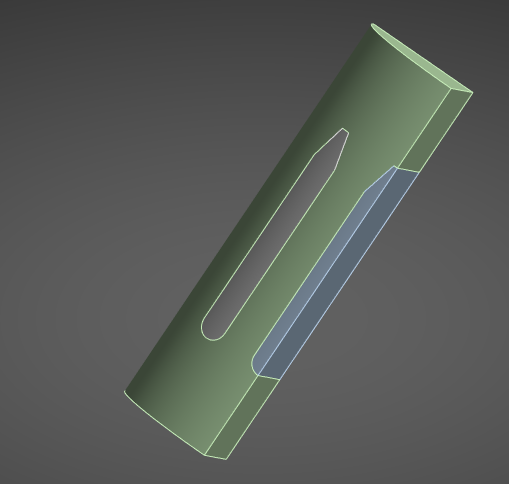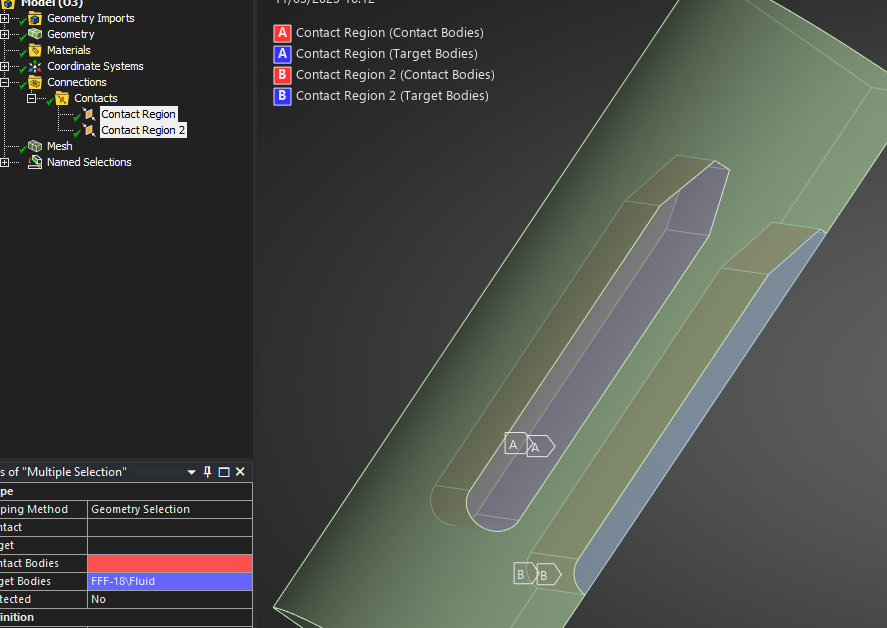-
-
December 27, 2024 at 12:37 am
noycepm
SubscriberHi there, I am currenlty undertaking a project in which I need to design a parallel baffle silencer for a gas turbine. I am trying to use ANSYS to model the attenuation of the silencer but am not sure how I would setup this simulation.
The baffles themselves contain an absorptive material which transfers acoustic energy to thermal energy which is the key element to be able to model and measure. I have the acoustic emissions from the gas turbine which I assume could be used as some input somewhere. Along with this, being able to setup some microphones downstream and upstream of the baffles to see the reduction in noise out of the stack.
Please let me know if you need anymore information.
-
January 7, 2025 at 1:22 pm
Federico
Ansys EmployeeHello,
are you only interested in the attenuation of the acoustic energy? If so, Fluent allows you to set up impedance boundary conditions 7.7. Boundary Acoustic Wave Models. Read through the link to understand the requirements, limitations and see if it applies to your case.
Depending on which acoustics model you use, you can set up point monitors or microphones (for FW-H), to measure the effects of the silencer.
-
January 7, 2025 at 2:45 pm
noycepm
SubscriberNot only that, I would also like to be able to measure the temperature of the absorptive material as it absorbs the acoustic energy. But thank you for the reply, I will have a look at what you've linked me.
-
January 17, 2025 at 7:10 pm
noycepm
SubscriberHi there, so I am unable to make the impedance boundary condition option appear. From what it seems I have the correct setup but there is no impedence option on any of my boundaries. I also do not have the FW-H option for acoustics, again what do I need to enable to make that an option? If I get this working, my next thought would be the incident acoustics, from my inlet I would like to be able to input some acoustic emissions as I have the fequency decibel data directly from the gas turbine?
-
January 20, 2025 at 2:18 pm
Federico
Ansys EmployeeWhat type of license do you have? Acoustics model require a Premium or Enterprise level license: 1.2. Program Capabilities
-
January 22, 2025 at 4:09 pm
noycepm
SubscriberI am running on a student license, I think I managed to make the FW-H option appear on one of my models but I cannot remember what allowed that.
-
February 17, 2025 at 3:57 pm
noycepm
SubscriberSo let's say I have the correct level license, I would like to recreate a simulation using these boundary conditions to measure the attenuation of these silencer baffles. By having an incident sound source with downstream microphones to measure the attenuation. How would I go about doing this in ANSYS Fluent while also measuring the flow through the baffles?

-
March 6, 2025 at 9:31 am
noycepm
SubscriberHi Federico, any help with this?
-
March 6, 2025 at 1:27 pm
Federico
Ansys EmployeeHello,
these boundary conditions are all available in Fluent, where you can:
- set a pressure profile for a pressure inlet;
- use a wall as a perfectly reflecting surface;
- user a non-reflecting boundary condition from the free-field (see previously shared link for Boundary Acoustic Wave Models); and
- use the impedance bounday condition previously mentioned to model the perforated panel.
Fluent also has the capability to define a porous medium 7.2.3. Porous Media Conditions
-
March 7, 2025 at 12:16 pm
noycepm
SubscriberHi, thank you for this, so with the FW-H model, I understand the receivers will be the microphone locations, what are the sources?
-
March 7, 2025 at 1:35 pm
Federico
Ansys Employeesource are defined by surfaces you choose in your domain. They can be solid surface, i.e. walls, or permeable surfaces, i.e. interior surfaces that enclose a region.
-
March 7, 2025 at 2:39 pm
noycepm
SubscriberSo the source of my sound will be at the pressure inlet, how would that work in fluent?
-
March 11, 2025 at 4:14 pm
noycepm
SubscriberI have the geometry below, the larger body is the fluid volume and the other bodies are the baffles. Being seperate bodies, they all have their own walls but take the contact region between the baffles and the fluid, there are two walls which are the exact same, one being part of the fluid volume, the other being part of the baffle volume. What I am assuming is I would make these walls velocity inlets with velocities of 0m/s to then make them impedance boundary conditions to model the perforated panel, what is the best way to set this up? I assume the boundaries will be related to these contact regions but what would be the simplest method to set this up? Also this is a follow up to my previous question about the source?


-
March 12, 2025 at 5:32 pm
noycepm
SubscriberI am also wondering how the mineral wool properties described in the first screenshot (density and flow resistivity) I showed translate to viscous resistance and inertial resistance in Fluent?
-
March 14, 2025 at 12:00 pm
noycepm
SubscriberHi Federico, any update on my further questions? Thanks
-
-
-
- You must be logged in to reply to this topic.



-
4843
-
1587
-
1386
-
1242
-
1021

© 2026 Copyright ANSYS, Inc. All rights reserved.







